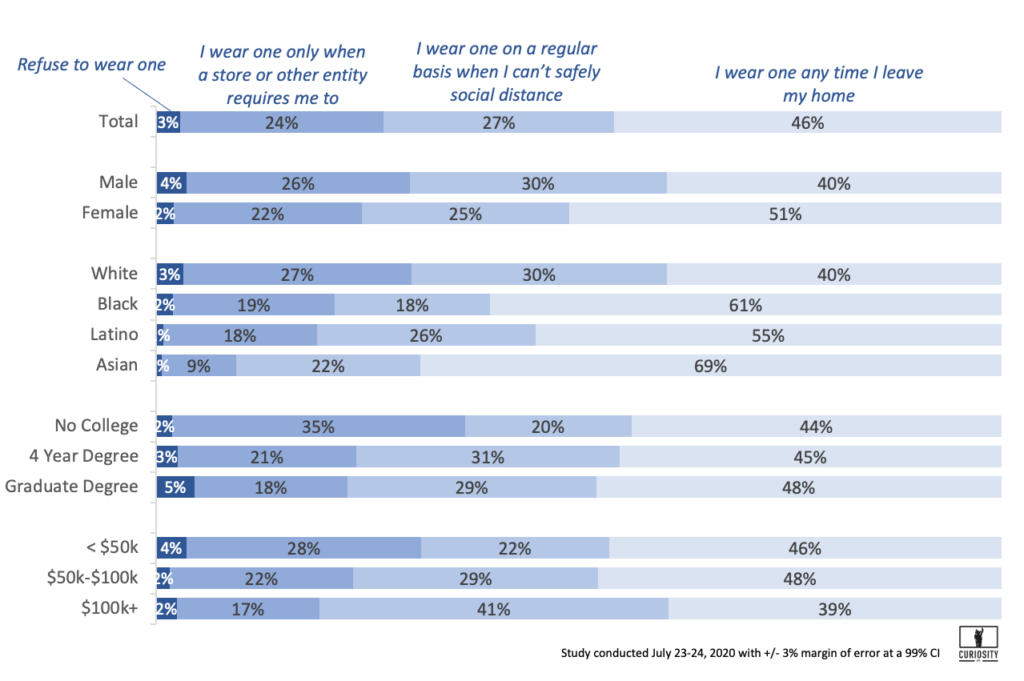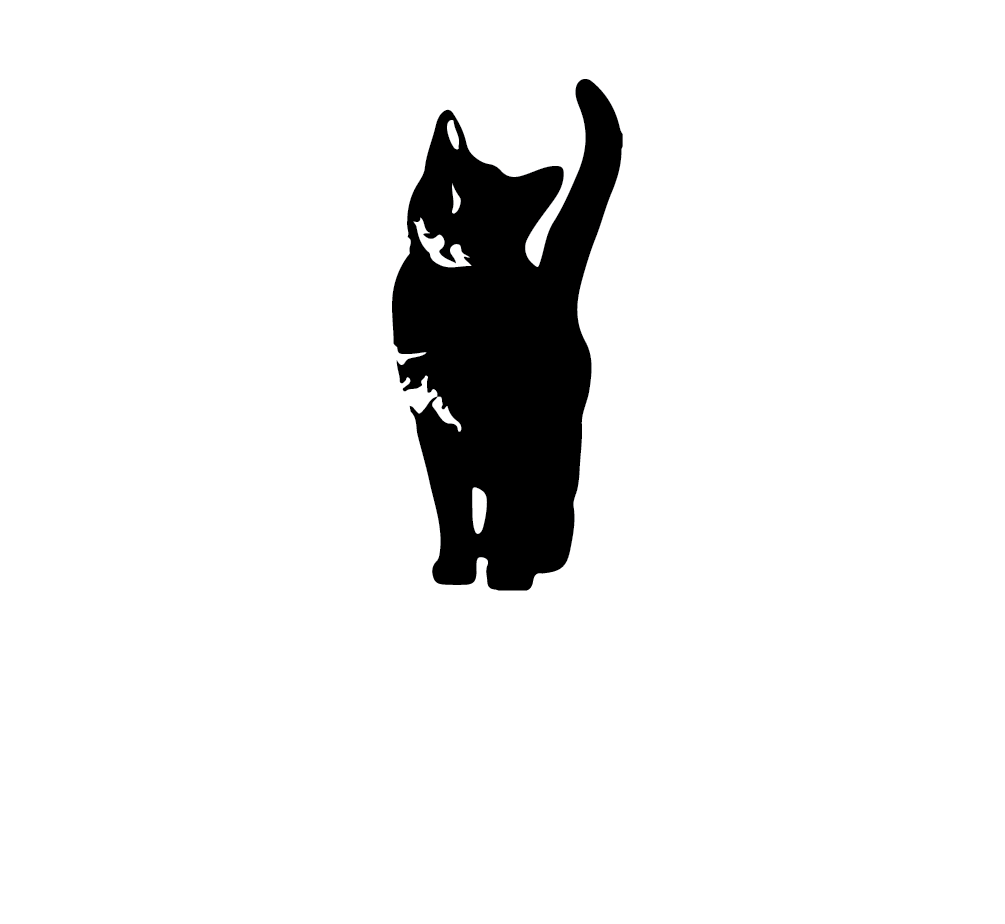As is the case with so much of the world, my life has changed dramatically since COVID-19 swept across the globe. For the last 20 years I have been on the road or in the air at least 2 times a month, usually much more often. My personal habits have changed dramatically too. We don’t go to the few restaurants that are open, we don’t go to outdoor concerts, we don’t do team sports, and we usually don’t travel farther than a few miles from home. We, and many other, have seemingly become of nation of hermits.
Retailers too have change dramatically. Walmart recently put into play a mandate that requires customers to wear masks, and was quickly followed by Target, CVS, Kroger and other larger retailers. In our small town, home of Walmart Headquarters, my observation has been consumers have largely been voluntarily compliant.
In March it was a rarity to see someone wearing a mask in a store. By the end of June, it was typical to see most shoppers at any given store wearing masks voluntarily. My working hypothesis was that as people viewed others wearing masks, they felt more comfortable doing so, to the point where not wearing a mask was almost socially unacceptable as lighting up a Pall Mall in the cereal aisle.
I assume this was a “new normal” for the country
We’re Not in Bentonville Anymore
Last week we were passing through a rural town in Oklahoma where I had to run into a local store to pick up a few things. I masked up and went into the mass merchandiser to quickly conduct my business and was surprised to find not a single customer wearing a mask or face covering. Moreover, employees with masks on had them pulled down around their necks while talking with customers. This was completely different from my hometown experiences and what was portrayed on the nightly news. However, everyone shopping in the store looked content. Their experience of reality was the one they had created and reinforced for one another.
Cloistered realities are not confined to the square footage of rural mega marts. As has been documented elsewhere social media serves to reinforce our own worldviews with powerful validating feedback loops by similar others.
This was brought home to me when I started following my state and local government social media feeds. It turns out these feeds attracted all manner of citizens, along with their disparate world views. Perusing comments in response to the governor or local official I observed a non-trivial number of people who were not only strongly opposed to wearing masks, some had indicated that they thought the whole pandemic was exaggerated or even a hoax.
I could not foot my reality with what I was seeing and reading. What was the true general public sentiment about the pandemic and what were consumer attitudes around wearing masks? In other words, were these attitudes aberrant outliers or more common than I thought amongst the general public
I took to the internet and could not find much recent information on consumer attitudes. The Pew Research Center conducted a study on mask wearing in retail setting in June (prior to most retailers requiring it) and found that 65% of Americans wear a mask “most of the time” while in stores or other businesses. However, as of this writing 28 states now have requirements for their citizens to wear masks under a variety of circumstances.
I was interested to learn what was the public’s behavior given the new urgency of wearing masks and what do people really believe about the pandemic in this new media swirl of conflicting reports about the pandemic? So on July 23rd, CuriosityCX conducted a study to find out. Using a nationally representative sample, Curiosity conducted a poll of 1,914 people between the ages of 18 and 86 in United States. Here’s what we found.
The Results
It appears most of the country believes that the pandemic is not a hoax. A full 97% of Americans believe that this pandemic is legitimate (i.e., ‘real’). However, there is varying degree of belief in the veracity of claims around the pandemic. About a quarter of the population think the threat of pandemic is exaggerated (27%), slightly more than a quarter think it is accurate (28%), but a plurality of the nation believes it much worse than most people think (43%).

Individual differences in beliefs are also telling. Men more than women think the threat is overblown and Latino and Whites much more so than Asians and African Americans, the latter of which has been disproportionately impacted by the pandemic in the United States. Education also plays a role in differences of opinion, with the more educated having a much more concerned view of things than the less educated. There is little relationship between income and perceptions of the threat of COVID-19.
Attitudes also vary by age, with younger people much more suspect of the veracity of the pandemic vs. older people. While a sense of invincibility is not uncommon amongst youth, the other factor at work is that they are not as apt to get seriously ill for the illness vs. older more vulnerable populations.

Looking to regional differences we see more lax attitudes in the South, an area more rural and only recently impacted by the full force of the pandemic. More concern is noted in the Northeast, many of whom have already weathered the storm and are have maintained a tenuous grip of continued spread.
Supporting our hypothesis there are large differences based on where you live. In rural areas, where people are less likely to have first-hand evidence of the threat, there is much more doubt. In Metro areas, it is much higher as they see more evidence of the pandemic every day.

What about wearing a mask or face covering? Based on our data it appears only a small fraction of the nation is refusing to wear one under any condition (3%). About a quarter (24%) only wear a mask because a store or other entity requires them to but for most of the nation they are worn except when they can’t social distance (27%) or all the time (46%).

We see some similar patterns in the data with males less likely to wear masks, except when compelled to, Whites, in particular ,are less likely to wear masks unless required and those with higher degrees generally being more likely to wear a mask under all circumstances. Lower income groups also are less likely to wear one.
While youth are more likely to doubt the threat of COVID-19, they do not vary much in their conformity to mask wearing. The notable difference in age is in the tendency for older people to be more conscious about wearing masks under most circumstance.

Wearing masks varies by geography with South and Midwest more begrudgingly wearing face coverings on a consistent basis than the rest of the country. If we look at the relationship between urbanicity and beliefs about the pandemic, we can see a clear relationship. The more urban an area is, the more likely the population will have more views consistent with the pandemic being a threat and compliance in wearing a mask.

What you see is what you believe
As former Speaker of the House Tip O’Neill was fond of saying “all politics are local”. The same seems to be the case for consumer behavior regarding beliefs about the coronavirus and wearing masks.
The human species is distinct in that they are likely the only one that has the ability to think in abstraction. However, in times of crisis we tend to revert to our more basic extinct of being devout empiricists. If we don’t experience it or know some who has first hand, it must not exist. This bias is turbo charged by the politicization and confirmation bias which ultimately results in these divergent attitudes and resultant behaviors.
What is the bottom line for businesses and policy makers? It’s a tough nut to crack as entrenchment on the issue for some is intertwined with political loyalty and self-identity.
If we look to past successful social policy on how to influence consumer behavior we can look at the United States’ succession attempt to at smoking cessation which is now at an all-time low (14%). A combination of sharing consistent scientific data from legitimate sources, organized and orchestrated changes in national and regional public policy, public-private collaboration, and time brought smoking from 45% of the population in 1965 to 14% today. It took the nation nearly 50 years to quit smoking.
With a vaccine likely not available until 2021 we have limited tools and time to manage the pandemic but much at stake. A study by Victor Chernozhukova of MIT, Hiroyuki Kasahara and Paul Schrimpf of the University of British Columbia’s School of Economics concluded that a national mask mandate would have save 40,000 lives in April and May of 2020. According to a recent study from Goldman Sachs lack of mask adoption nationally would wipe 5% off our Gross Domestic Product by year’s end or about $900 billion dollars, slightly more than the entire GDP of Turkey.
What federal and state public policy will ultimately be is unclear and so therefore so is our future. Based on our data it does appear, however, there is a high degree of (self-reported) of compliance in wearing masks and a belief in the seriousness of the pandemic by the majority of Americans.



